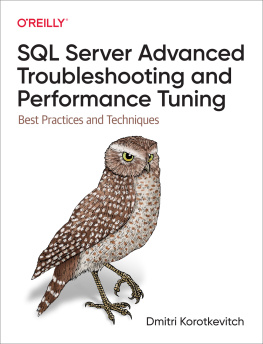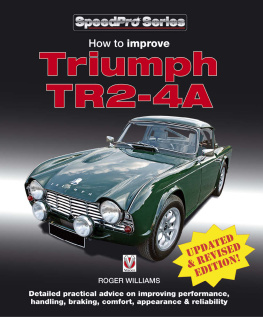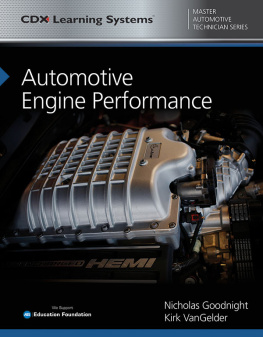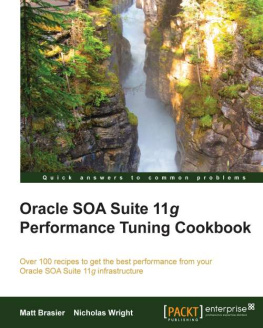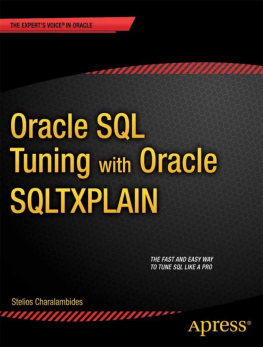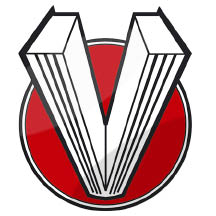HOW TO POWER TUNE
MGB
4-CYLINDER ENGINES
FOR ROAD & TRACK
New Updated & expanded Edition
PETER BURGESS
In memory of Wilson McComb and Bill Nicholson
First printed in paperback format in 1996.
First published in ebook format January 2012
This edition published in ebook format August 2013 by Veloce Publishing Limited, Veloce House, Parkway Farm Business Park, Middle Farm Way, Poundbury, Dorchester, Dorset, DT1 3AR, England Fax 01305 250479 e-mail .
Ebook edition ISBN: 978-1-845845-17-9
Paperback edition ISBN: 978-1-903706-77-0
Pater Burgess and Veloce Publishing 2013. All rights reserved. With the exception of quoting brief passages for the purpose of review, no part of this publication may be recorded, reproduced or transmitted by any means, including photocopying, without the written permission of Veloce Publishing Ltd. Throughout this book logos, model names and designations, etc, have been used for the purposes of identification, illustration and decoration. Such names are the property of the trademark holder as this is not an official publication.
Readers with ideas for automotive books, or books on other transport or related hobby subjects, are invited to write to the editorial director of Veloce Publishing at the above address.
All Ebook design and programming by Veloce Publishing Ltd on Apple Mac.
Veloce Publishing Ltd
digital.veloce.co.uk
Contents
Thanks & about the author
My thanks to David Gollan B ENG HONS for doing the lions share of the work, including the photographs and line drawings; Rog Parker for his knowledge of suspension and brakes, and Robert Day for photo developing and printing and for teaching us to use a camera!
Also, Terry Hurrell at Moss London; Kash and the lads at Moss Oldbury; Gerry Brown; Alan Scott; Doug Smith; Shaun Powell; Martin Hardy; Max Smith; Alan Peacock; Michael Lee; Keith Peats, Nick Walker and Phil Gollan.
Keith Hick of the MG Owners Club was kind enough to vet and approve the original manuscript.
For this updated edition, a big thank you to Keith Hippey and Jordan Dent, and to Lloyd Faust and Mike Ellsmore for letting us know of misprints and errors.
PETER BURGESS
Peter was born in Byfleet in Surrey about a mile from the Brooklands race circuit.
He has been modifying MGBs since 1978 and runs a small, friendly tuning business which enjoys worldwide distribution.
Peters technical and theoretical knowledge of engines and horsepower production has resulted in many MGB race-wins and Championships in Circuit Racing, Sprints, Hill Climbs, Trialing and Rallying every year from 1991 to this completely revised edition in 2013.
Drivers using Peters cylinder heads and engines range from absolute novices taking to the track for the first time, to legendary drivers such as Stirling Moss.
Essential information & using this book
ESSENTIAL INFORMATION
This book contains information on practical procedures; however, this information is intended only for those with the qualifications, experience, tools and facilities to carry out the work in safety and with appropriately high levels of skill. Remember that your personal safety must ALWAYS be your FIRST consideration.
The publisher, author, editors and retailer of this book cannot accept any responsibility for personal injury or mechanical damage which results from using this book, even if caused by errors or omissions in the information given. If this disclaimer is unacceptable to you, please return the pristine book to your retailer who will refund the purchase price.
This book applies specifically to MGB & MGB GT cars with four-cylinder (5-main bearing) B-series engines, though it will also prove useful in tuning any BMC/British Leyland B-series engine.
Please be aware that changing the engines specification may mean that it no longer complies with exhaust emission control regulations in your state or country check before you start work.
You need to know that varying production tolerances in cylinder head castings can mean that breakthrough to the waterways or other passages can occur if metal is removed by grinding. If such breakthrough does occur its most likely that the head will have to be scrapped.
An increase in engine power and therefore performance will mean that your cars braking and suspension systems will need to be kept in perfect condition and uprated as appropriate.
USING THIS BOOK
Throughout this book the text assumes that you or your contractor will have an appropriate MGB workshop manual to follow for complete detail on dismantling, reassembly, adjustment procedure, clearances, torque figures, etc. This books default is the standard manufacturers specification, so if a procedure is not described, a measurement not given, a torque figure ignored, assume that the manufacturers procedure or specification for your car should be used.
Youll find it helpful to read the whole book before you start work or give instructions to your contractor. This is because a modification or change in specification in one area can cause the need for changes in other areas. Get the whole picture so that you can finalize specification and component requirements as far as possible before any work begins.
Youll find the term thou turning up quite often in the text, it simply means one thousandth of an inch (0.001in/0.0254mm).
Introduction
The aim of this book is to convey information based on my experience of tuning MG four-cylinder engines, and to give an overview of the type and level of tuning options currently available. You should then be able to make a more informed choice in order to improve your cars performance.
Topics are covered in sufficient depth to interest readers who have already spent many years improving their MGBs, whilst endeavouring to introduce performance tuning to others who drive a standard MGB and are not familiar with, or have previously been put off by, the technical language of tuners.
When performance tuning an engine, components are modified or changed in order to improve function and efficiency, in turn improving efficiency of various engine processes. With the modern computer-designed and controlled types of engine this is becoming more and more difficult to achieve. The optimisation process has, to a large extent, already been completed by the manufacturer during initial design and development, but financial constraints, legislation and market forces still limit the extent of factory performance tuning. Older designs such as the B series, however, offer far more scope for tuning and modification. Years of revision and refinement by the aftermarket tuning industry have allowed considerable performance gains to be made; gains often far in excess of those achieved by the early factory tuning programmes.
Much the same can be said about performance tuning the cars suspension and braking systems. While, again, modern cars are becoming more and more sophisticated in terms of ride, handling and stopping power, any driving sensations or feedback have been lost in favour of comfort and refinement. Hopping in your favourite classic for a drive can sometimes come as a bit of a culture shock, albeit a very pleasant one, after a period of driving a modern clone. Here again, upgrades to improve performance in this department are available.


